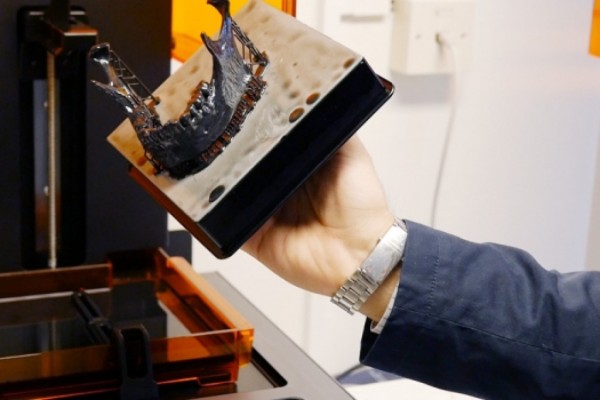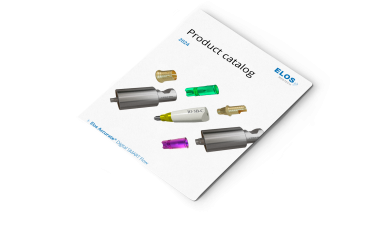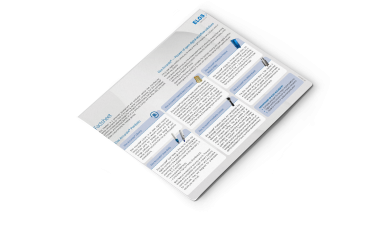In my previous blog post Improving Dental Care Through Digitalization (Part 1), I spoke to the dentist, dental technician, and researcher Michael Braian about his passion for 3D-printing and intraoral scanning. I was very intrigued by his latest study about the possibilities to improve dental care through digitalization. In this second part, Michael and I get deeper into the subject of digital dentistry and talk about its importance for the dental care, the advantages of a fully digitalized workflow, and how the dental landscape has changed over the past few decades.
About your study, Michael – I happen to know that last year, you won the Swedish Researchers’ Grand Prix. Why did you win?
Yes, that is right. The Swedish Researchers’ Grand Prix is a national competition that challenges researchers to present their research to a public audience in an engaging and informative way, in just a few minutes. The aim is to inspire scientists to communicate more about their research and bring the studies into the public domain to benefit society. So why did I win? Well, I never asked the audience why they voted for me, so I don’t know really! But I guess, what made me stand out from the other competitors, was that I visualised my research using a lot of pictures and graphic design in my presentation. This way, I made it easy for the audience to understand my research and also remember it. The reason I visualised my research to this large extent, is simply because this is how I learn the best. Apparently, other people work the same way. You know the saying: A picture is worth more than a thousand words. I guess I used a lot of pictures and got a lot said!

How important is the digitalisation for the dental care, would you say?
It is still early to say. Imagine that a digital workflow did not exist at all in dental care. Would it still work perfectly fine? The answer is: Yes, it would. The conventional techniques in dental care have worked excellent for decades. However, if dental professionals are looking for a simpler, faster, more accurate, and more efficient workflow, there is a large potential in digital dentistry.
Tell me more about that potential. What are the advantages of a fully digitalized workflow in dental care for dentists and dental technicians?
A fully digitalized workflow brings many advantages to the table for both dentists and dental technicians but also for the patients. For a dentist, the advantages of taking a digital impression of the patient’s teeth using an intra-oral scanner are that the scanning itself only takes a few minutes and provides an immediate 3D impression with very detailed information about the patient’s teeth. It allows for the dentist to zoom in on the patient’s teeth and discuss the case with the patient straight away. As the impression is digital, the dentist can then send the file to the dental lab in seconds – the same as sending an ordinary email. For a patient, the advantages of having their teeth scanned with an intra-oral scanner, is that it allows for a much more convenient dental experience. A conventional moulded impression involves bad-tasting impression material inside the patient’s mouth for quite some time, that is often uncomfortable and, worst case, activates the gag reflex. The intra-oral scanner is much more comfortable and requires only a few minutes of the patient’s time. With direct access to the digital impression on the computer screen, the patient will get a much clearer picture of their own case. It also allows for the patient to ask questions related to the impression and discuss further treatment with the dentist.
For a dental technician, the advantages of receiving a digital file of the patient’s teeth – instead of having to wait for a conventional moulded impression for hours, or even days – is that the technician can start designing the prosthetic construction directly in a computer software. This eliminates a number of steps for the technician including creating a plaster model, articulate the case, do a wax-up, turn the wax model into the end product, and so on. Instead, once the design is finished, the technician can send the digital information to a milling machine that creates the prosthetic restoration. To sum it up: While a traditional workflow includes many different steps, the digital workflow only includes a few. Minimising the number of steps also minimises the risk of errors. Digital dentistry simplifies the entire workflow and helps improve the communication between dentists and dental technicians as well as the communication with patients. Using the digital techniques such as CAD/CAM, milling, and 3D-printing allows for a faster and more efficient workflow, also leaving the patients with a more pleasant dental experience.
No wonder more dental professionals are looking into a digital workflow! How has the dental landscape changed over the past few decades?
The dental landscape has changed a lot, and that is mainly because of the digitalization of the dental production techniques. The most prominent part is the digital transformation that the dental technicians are undergoing. They have made a shift, going from using their bare hands to using digital tools to create prosthetic restorations. The technicians have gone from working 100 percent manually, using conventional techniques only, to working 50 percent manually and 50 percent digitally, or, if the dentists are using intra-oral scanners, to even working 100 percent digitally. This means that some of the dental technicians today have practically digitalized their entire workflow. This was the second part out of four in our video blog series with Michael Braian about digital dentistry. The interview continues in our third part. Also, read:



